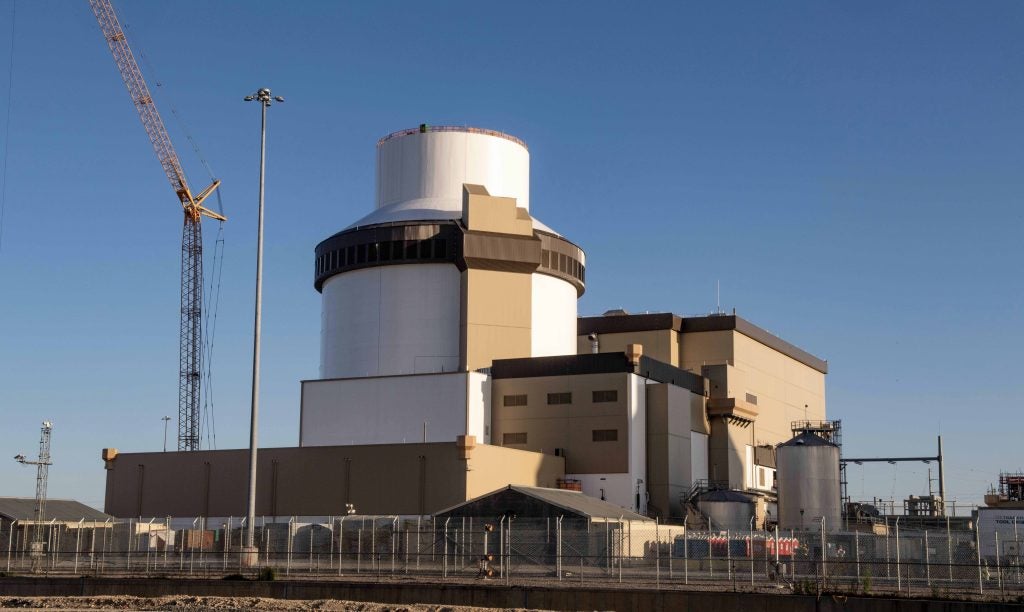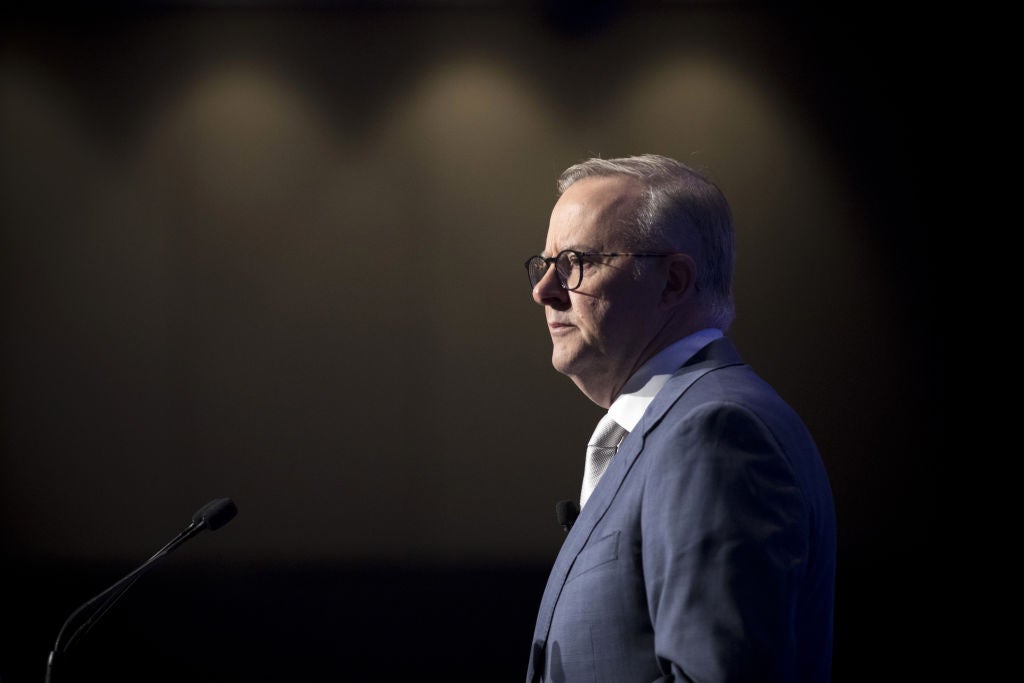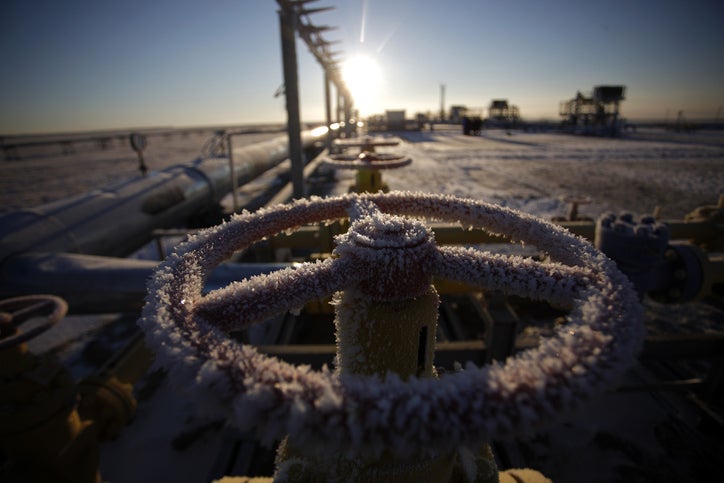April 2023 marked a big moment for US nuclear power: the country’s first new reactor in three decades – Unit 3 at the Vogtle Nuclear Plant in the state of Georgia – began supplying electricity to the grid. Both Units 3 and 4 – which is scheduled to come online by Q1 2024 – are the US-designed Westinghouse AP1000 advanced pressurised water reactors, and the completed four-reactor facility is set to be the largest nuclear plant in the US, providing enough power for a million houses and businesses.
“Unit 3 [is] in the final stages of start-up testing and Unit 4 [is] making progress towards safely loading fuel,” says Kim Greene, chairman, president and CEO of Georgia Power, which is managing the project. "It is incredible that these new units will provide our state with zero-emissions energy for the next 60–80 years, and that's thanks to the dedication of the teams at the site to getting these units built, and built right.”
The arrival of the new reactors comes as many industry figures are hoping for a nuclear revival in the US after decades of stagnation. Alongside other sources of low-carbon power, President Joe Biden’s Inflation Reduction Act (IRA) offers a 30% federal investment tax credit for new nuclear projects. “A unique attempt, in terms of policy instruments intended to drive more lower energy deployment,” says Matt Bowen from the Columbia Center on Global Energy Policy.
Numerous outlets have heralded a “new era” for US nuclear power, but enduring doubts over the cost and effectiveness of new nuclear reactor models, as well as enduring PR problems related to nuclear waste and development times, makes it highly uncertain that any new nuclear boom lies around the corner.
Bad US nuclear precedents
The arrival of Vogtle 3 and 4 is not necessarily good news for the reputation of US nuclear power. The reactors have ended up costing in excess of $30bn – more than $16bn over budget – and they are currently more than six years behind schedule.
Vogtle is just the latest chapter in a chequered history. During the boom years of the 1970s and 1980s, the US built around 100 reactors, and became by far the biggest gross nuclear generator in the world. The US retains this title with around 20% of global nuclear generation capacity – but a partial meltdown at the Three Mile Island nuclear facility in Pennsylvania in March 1979 “had a significant impact on public perceptions of nuclear energy’s safety”, explains Clarence Edwards from the think tank E3G.
New nuclear developments were stymied by Three Mile Island, project budget overruns (a US Department of Energy study of 75 reactors built between 1966 and 1977 found that the average cost was 207% over budget) and the US shale gas revolution of the 2010s, which made the economics of nuclear even less attractive.
Vogtle was supposed to change this narrative. Georgia Power told the Georgia Public Service Commission in 2008 that the new reactors would be built at lower cost and in far less time than previous nuclear plants as a result of their new AP1000 nuclear reactor designs. “The reactors of the 1970s and 1980s disproved the idea that nuclear was a cheap energy source, so the industry came along and said: ‘We have new designs for reactors that are safer and more efficient, and we are going to build them,’” explains David Schlissel from the Institute for Energy Economics and Financial Analysis (IEEFA), a think tank.
The political popularity of these new reactors could not mask the fact that there remained great uncertainty over how a commercial roll-out would play out: Schlissel himself warned the Georgia Public Service Commission in 2008 of the “great uncertainty concerning the ultimate cost and schedule” of the Vogtle reactors.
A project to install two AP1000 reactors at the Summer Nuclear Station in South Carolina began construction in 2012, but after years of mismanagement and poor oversight, it was cancelled in 2017. South Carolina residents are ultimately footing the bill for a failed project that cost $9bn.
US nuclear power vs the rest of the world
The US pioneered nuclear power, with the first commercial plant coming online in Shippingport, Pennsylvania, in 1957, but the country has now fallen far behind in the global rankings for new nuclear power deployment: of the 54GW of nuclear capacity the International Energy Agency (IEA) says was under construction worldwide in 2022, China was building 16.1GW, Korea 5.6GW, Turkey 4.4GW, India 4.2GW, Russia 3.8GW, the UK 3.3GW and other countries a combined 16.6GW.
Of the 31 reactors that began construction globally since the beginning of 2017, 17 are of Russian design, ten are of Chinese design, two are of European design and two are of Korean design, according to the IEA.
According to Patrick White, project manager at pro-nuclear think tank the Nuclear Innovation Alliance, the failure of US nuclear technology to take off either domestically or abroad is not to do with the technology itself. Instead, it is to do with “poor project management and execution” in the US, as well as “higher labour costs in the West”, which means that developing new GW-scale plants using US technology looks like a risky proposition – compared with Chinese and Russian technology, which has numerous examples of being installed efficiently and with cheap labour.
“Both Russia and China have continuous domestic programmes in support of financing and exporting nuclear technology, which the US has not done in recent decades,” adds Columbia’s Bowen. “The US Government probably worries about expanded Russian and Chinese influence around the world.”
After the Inflation Reduction Act
Nuclear power has some strong advantages for the energy transition, being a provider of large-scale, 'baseload' low-carbon power. For some, nuclear also offers the prospect of more energy security in the face of volatile fossil fuel markets following Russia’s invasion of Ukraine.
Passage of the IRA and the CHIPS and Science Act (CHIPS) in 2022 provides mechanisms for US power markets to make full use of these advantages.
As well as offering a 30% tax credit on new nuclear power plants, the IRA aids existing nuclear power plants that might be nearing retirement by providing a credit of $15 per megawatt-hour (/MWh) of electricity, potentially increasing to $25/MWh should power prices increase. New plants can also leverage tax credits if they are built on a brownfield site, or if they are used to generate hydrogen. The CHIPS bill, meanwhile, provides $800m to support commercial planning and development of advanced nuclear reactors.
“The government is basically saying: 'Okay, how can we try and bring as much new clean energy onto the grid as possible?' The tax credits and incentives in IRA are the answer to this, incentivising both nuclear and other technologies,” says White.
“The new incentives have also completely changed the conversation on the existing nuclear industry, making a clear economic case for keeping old nuclear plants running for the next 20–40 years.”
With an average reactor age of 40 years in the US, operating licence extensions are now very much part of the policy conversation. Ten reactors are currently being assessed to have their licences extended to up to 80 years, according to the US Nuclear Regulatory Commission, with an additional eight reactors to be assessed.
When it comes to new nuclear projects, much of the conversation post-IRA is around smaller-scale reactors known as SMRs (small modular reactors). Backers say these reactors should be cheaper and nimbler than their larger competitors, and as a result they should avoid the massive delays and cost overruns witnessed at other projects.
“The theory is that a 20% cost overrun on a $1bn project is a heck of a lot better than a 20% overrun on a $15bn project,” explains White. “Modular reactors can also be built in a factory in a more reproducible manner, and they are being designed and optimised to complement industrial processes and hydrogen production, as well as provide reliable electricity.”
There is certainly hype around SMRs: a 2022 survey by lobby group the Nuclear Energy Institute found that utilities anticipated nuclear capacity equivalent to 300 new SMRs being built in the US over the next 25 years. US companies like NuScale Power Corporation and X-energy have appeared on the scene with designs for SMRs, and the US has signed deals with Indonesia and South Korea to develop its SMR technology abroad.
Expensive, unproven SMR technology
However, what happens when you look past nuclear industry excitement, at what is actually being proposed? Data from GlobalData, Energy Monitor’s parent company, shows that new GW-scale nuclear plants remain unpopular among developers in the US, despite all the new tax credits and incentives. Beyond the two units in Georgia, no large reactor in the pipeline is beyond a very early stage of development.
“There are indeed very few of the traditional large plants in the pipeline,” concurs Mike Hogan from the think tank the Regulatory Assistance Project (RAP).
“There has been no major resurgence in new nuclear plants so far,” agrees Barry Rabe, professor at the Gerald R Ford School of Public Policy at the University of Michigan. “Beyond Georgia, I could not tell you where the next five nuclear reactors in the US are going to be, if they are to come at all.”
When it comes to SMRs, however, GlobalData shows that 26 reactors have been announced in military, industrial and power-generating scenarios. They have a combined capacity of 2.9GW, which is 400MW larger than the combined capacity of Vogtle Units 3 and 4.
However, none of these SMRs have begun construction, and none of the technologies are operating commercially as yet.
“SMRs remain experimental technologies, unlike solar and wind, which we know offer cheap and affordable power,” says Rabe.
“The [SMR] technology remains unproven in the sense that we have not built any yet,” says Bowen. “If the construction of SMRs proves anything like the construction of the AP1000 [at Vogtle 3 and 4], then in all likelihood we won’t build very many of them.”
As yet, the prospects of SMRs breaking the pattern of overruns and high costs does not look particularly promising. NuScale’s Carbon Free Power Project (CFPP), a six-module 462MW plant to be built at the Idaho National Laboratory, is behind schedule and well over budget, and has failed so far to attract enough customers to ensure the viability of the project, says the RAP’s Hogan. “Other projects are in most cases still years away from getting licensing approval.”
“The central premise of the SMR concept – the ability to factory-build standardised systems in sufficient volume to drive down the cost – won’t even be possible until the mid-2030s if it pans out at all,” adds Hogan. “We need to be most of the way down the road to decarbonisation of the electricity sector by then [if the US is to decarbonise by mid-century].”
[Link src="https://www.energymonitor.ai/all-newsletters/" title="Keep up with Energy Monitor: Subscribe to our weekly newsletter" font-size="20px"]Hogan concludes that SMRs may still have a role in providing “clean, high-quality industrial heat, including possibly zero-carbon hydrogen production”, and that it would be wise to keep researching how nuclear can safely and cost-effectively play a part in decarbonisation. “But so far it is not entirely clear what that might be.”
Beyond construction costs, the NuScale and Utah Associated Municipal Power Systems’ CFPP SMR project has also repeatedly revised upward its operating cost of electricity as the project has developed, from $55/MWh in 2016, to $58/MWh in 2021, to $89/MWh in 2023. This is cheaper than the $150/MWh that Vogtle 3 and 4 will require – but significantly more expensive than the $30.20 average price of recent PPAs for solar and storage in the state of Georgia, according to the IEEFA.
“The taxpayer will be the one who picks up any unnecessary additional cost used to subsidise nuclear, either in their energy bill or via taxpayer subsidies,” adds the IEEFA’s Schlissel.
Other problems pose a threat to the roll-out of SMRs. There is the “political nightmare” of long-term nuclear waste storage: all historic US nuclear waste is currently stored on-site at nuclear facilities, despite the fact that “the communities that hosted those facilities never gave approval or consent to become permanent nuclear waste repositories”, says Rabe.
In addition, the US currently does not produce any of the high-assay low-enriched uranium (HALEU) fuel that is required for most advanced nuclear reactors. Only TENEX, which is part of Russian state nuclear energy company Rosatom, sells HALEU commercially at the moment. The US Department of Energy has an ongoing programme called the HALEU Consortium to identify ways to develop a US HALEU supply chain.
Then there are outdated regulatory hurdles that must be smoothed out for there to be a rapid deployment of new SMRs. “The nuclear industry in the US is regulated by the Nuclear Regulatory Commission (NRC), and there are initial efforts under way by nuclear advocates to get NRC regulators to streamline the regulatory process for advanced nuclear reactors,” explains E3G’s Edwards. A bipartisan bill, the ADVANCE Act, which is currently making its way through Congress, is expected to ease some of the difficulties.
An uncertain future for US nuclear
There are some things about the future of US electricity that nearly all analysts agree on. One is that electricity grids are set to be dominated by variable renewables, namely solar and wind, alongside battery storage, as these offer an increasingly cheap source of low-carbon power generation.
Another is that existing nuclear power plants are likely to keep running for as long as they can do so safely. The IEA describes extending nuclear power lifespans as an “an indispensable part of a cost-effective path to net zero by 2050”.
When it comes to new nuclear energy, it remains possible to be optimistic. “I think that at least some upcoming US nuclear projects will be better managed than the AP1000 projects – which is a really low bar to clear – and if they are, and they come in relatively on schedule and on budget, then I expect more and more of them will be built, especially with a third of the cost being taken away by a tax credit,” says Bowen.
Yet beyond hopes and hypotheticals, data shows us there is currently no new generation of GW-scale nuclear plants set to come online. Meanwhile, the federal tax credits available mean there are a number of SMR projects in development, and in all likelihood some of these will produce power for the US. However, ever-increasing price estimates, along with the fact that much SMR technology is still at the development stage, makes it unlikely SMRs will play a major, competitive role in the rapid decarbonisation of the US power system that is required over the next few decades.













